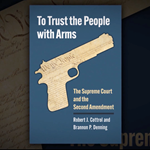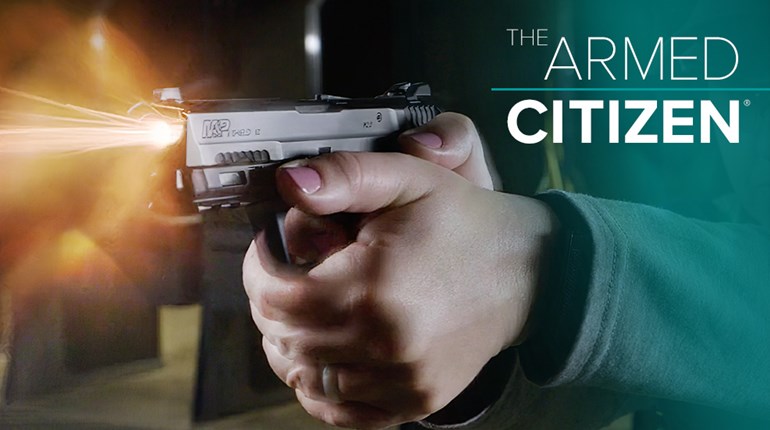
Chicago Mayor Rahm Emanuel has made a habit of blaming Second Amendment freedom outside of Chicago for gang warfare in the city, but Emanuel’s office ignored our interview requests to explain how this could be so. The Chicago Field Division of the Bureau of Alcohol, Tobacco, Firearms and Explosives (ATF), however, not only agreed to answer questions, but was very candid. Some of their answers even expose Emanuel’s anti-gun spin.
Thomas Ahern, public information officer for the Chicago Field Division, began by explaining that ATF’s special agents focus their investigations on armed violent offenders, career criminals, gun traffickers and gangs. The ATF also assists local, state and federal law enforcement agencies. Basically, when a gun is found or seized from a criminal, the Chicago Police Department or other law enforcement agency asks the ATF to help trace the gun.“Gun dealers are typically allies in this fight.”
— Thomas Ahern, public information officer for the ATF’s Chicago Field Division
To accomplish this, the ATF has a criminal gun database system called the National Integrated Ballistic Information Network (NIBIN). A police department sends them a gun’s make, model and serial number and possibly a spent casing and bullet from the gun. This information is entered in the database to see if the ATF can find matches with other crimes. ATF agents will also follow a guns’ trail to see where it was originally sold and who bought it. The ballistic information attained from the spent casings and bullets are also entered into the digital database so agents can search for matches and better assist with possible prosecutions.
This is where police work runs into political spin. Chicago’s Mayor Emanuel and many other anti-gun politicians and activists blame the licensed firearm dealers around the city of Chicago, and even those as far away as Mississippi, for supplying guns to criminals in Chicago.
As the ATF’s agents are the ones who work with gun dealers—Federal Firearms Licensees (FFLs)—to make sure those gun dealers are complying with federal law, I asked if the ATF has evidence that indicates gun stores around Chicago are supplying gangs with guns. Ahern replied, “In our experience, licensed gun dealers are not the problem.”
When asked if gun dealers help to keep guns out of the hands of criminals, Ahern said, “Gun dealers are typically allies in this fight. Our agents maintain close relationships with gun dealers and we instruct them not to sell to anyone they suspect might be a straw purchaser. We also ask that they contact our agents if they suspect a criminal is attempting to purchase guns from them. They mostly do this.”
Ahern noted that if guns found at crime scenes—he says law enforcement is recovering about 45 guns per day in Illinois—are found to come from a particular store, they’d investigate and potentially arrest the gun dealer responsible, but again that hasn’t been occurring.
Actually, most guns recovered at crime scenes were not recently displayed on the shelves of gun stores. The “time-to-crime” average in Illinois (“time-to-crime” is an ATF statistic that measures the amount of time from when a gun is sold by a dealer to when it is found at a crime scene) is 13 years. Obviously, gun dealers are not the problem.
Ahern said, “If we see that a gun was sold recently by a dealer, this does raise a red flag.”
According to ATF statistics, 1,041 guns seized in Illinois came from nearby Indiana (3,590 came from within Illinois) in 2014. Ahern said that because of Indiana’s freer gun laws, criminals are able to buy—or have a straw purchaser buy—guns there. When asked how they are certain a gun was bought in Indiana given that there was no background checks done on the sales he is referring to, Ahern said they use “cooperating” individuals in their investigations. When asked if these cooperating parties were the people selling the guns, he couldn’t say, as this might jeopardize investigative techniques and individuals involved.The “time-to-crime” average in Illinois (“time-to-crime” is an ATF statistic that measures the amount of time from when a gun is sold by a dealer to when it is found at a crime scene) is 13 years. Obviously, gun dealers are not the problem.
Fair enough, but I pressed this point because once again it seems that gun owners and gun dealers are obviously partners in helping authorities keep guns out of the hands of criminals. In a political climate where law-abiding gun owners and dealers are often being accused of being complicit in arming criminals, this is a very important point.
Some people have certainly been caught gunrunning from Indiana. For example, last January Terrence Griggs was sentenced to 16 years in federal prison for selling 11 firearms and a bulletproof vest to an individual he believed was a high-ranking member of a Chicago gang. The “buyer” was actually an informant cooperating with law enforcement from the ATF.
To curb the rise in the homicide rate, Ahern also said agents “monitor Facebook accounts of known gang members. We’ve found that before shootings occur there are often things said on Facebook.” He also said there are about 130 known gangs in Chicago with 150,000 members, so I wondered how law enforcement could possibly find the time and resources to utilize this Orwellian tactic. All Ahern would say was “We do monitor Facebook.”
Ahern then explained that, after an arrest is made, gun-related crimes are prosecuted as “often as possible at the federal level” because punishments are often “more severe on the federal level.”
This surprised me, as the federal district of Northern Illinois, which includes Chicago, has had the lowest prosecution rate of gun crimes in the entire country. I pointed this out and Ahern said that a change in “leadership at the Chicago’s Department of Justice two years ago” is making things better. He then backed up and said decisions about whether to prosecute on the local or federal level are made on a case-by-case basis.
Now, as the age-old cop-drama theme has it, good cops risk their necks to investigate and make arrests only to see prosecutors let bad guys walk after plea bargains, because of loopholes in the law and for other reasons. So I noted this and asked if this has been the case in Chicago. Ahern didn’t know, but he did say, “They are very aggressive over in Indiana.”
When I followed up with more questions, Ahern said there are fewer gun-violence cases to deal with in Indiana. When asked if there might be a correlation, he couldn’t say.
Ahern did say that the ATF has a good working relationship with the DOJ. It should—the ATF is an arm of the Obama administration’s DOJ.
(Next week, see my interview with Chicago’s Assistant U.S. AttorneyJoseph D. Fitzpatrick for his explanation about the DOJ’s response points to the political problem now making many of the solutions fall short.)


































